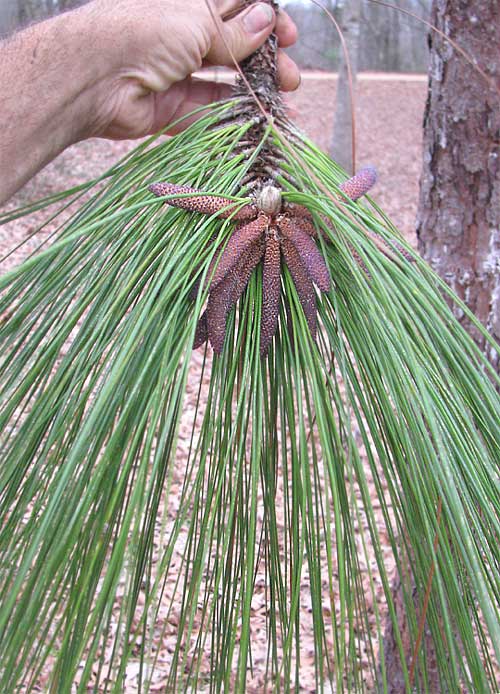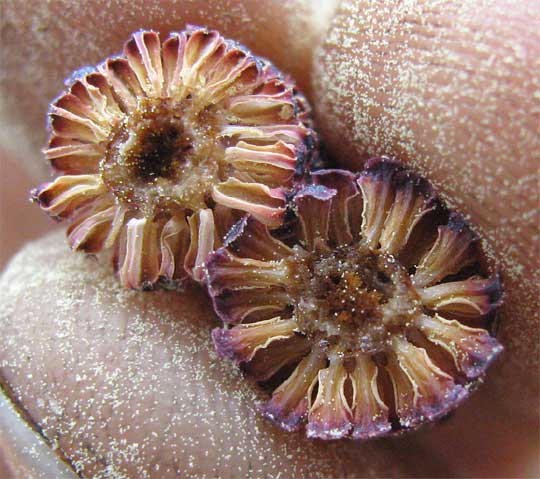Excerpts from Jim Conrad's
Naturalist Newsletter
from the February 23, 2009 Newsletter, issued from the forest near Natchez, Mississippi; elevation ~400ft (120m), ~N31.47°, ~W91.29°:
LONGLEAF PINE FLOWERING
Though we're in the general Deep-South distribution area of the Longleaf Pine, PINUS PALUSTRIS, I've not seen the species naturally growing here in the much- dissected uplands next to the Mississippi River. Probably its absence here reflects the effect on the soil of the thick loess mantling our landscape near the river -- loess being the wind-deposited, ice-age dust referred to last week. For example, one important way loess alters soil is by increasing its pH; soil not far to our west not derived from loess tends to be more acidic.
Still, people here admire the big trees with their dangling needles up to 18 inches long, and plant them around their houses. That's what Karen did, and right now her 15-ft-tall trees bear the curious items shown below:

The purplish, fingerlike things are catkin-like clusters of densely packed, spirally arranged anthers. Anthers are the male stamen's baglike structures that split open to release pollen. In fact, when I thumped the twig in my hand, a dense cloud of yellow pollen puffed out.
I removed one of the clusters, broke it at its middle, and you can see the cluster in cross-section below:

Of course those are yellow pollen grains dusting my fingers. Each of the broccoli-spear-shaped, purple topped things radiating out from the central part is an anther. Each anther is composed of two pollen- containing cells, or locules, situated along one of the anther's sides, and the two cells are joined by connective tissue that expands at the top into a tough, scale-like apex.
I can't find female flower clusters -- the future cones -- on these young pines. They may be higher in the trees, or maybe they're not present on such young trees. The oval, silvery thing at the base of the male parts is the terminal bud, its thick fuzziness nicely protecting new stem and needle tissue from the cold.